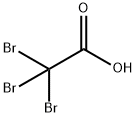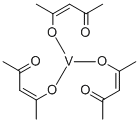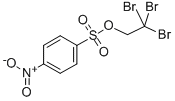2,2,2-Tribromoethanol
Synonym(s):Tribromoethyl alcohol
- CAS NO.:75-80-9
- Empirical Formula: C2H3Br3O
- Molecular Weight: 282.76
- MDL number: MFCD00004671
- EINECS: 200-903-1
- SAFETY DATA SHEET (SDS)
- Update Date: 2025-12-25 13:52:50

What is 2,2,2-Tribromoethanol?
Chemical properties
White crystals or powder; slight aromatic odor and taste. Unstable in air and light. Slightly soluble in water; soluble in alcohol, ether, benzene, and amylene hydrate; aqueous and alcoholic solutions decompose on exposure to light. Combustible.
The Uses of 2,2,2-Tribromoethanol
2,2,2-Tribromoethanol is utilized in organic synthesis of beta-amino alcohols. The pharmaceutical preparation of tribromoethanol serves as an anesthetic in medicine.
The Uses of 2,2,2-Tribromoethanol
Medicine (basal anesthetic).
The Uses of 2,2,2-Tribromoethanol
2,2,2-Tribromoethanol can be used as a functional initiator for the introduction of α-hydroxyl groups to poly(methyl methacrylate) and poly(n-butyl acrylate).
What are the applications of Application
2,2,2-Tribromoethanol is an organic compound used to anesthetize mice
Definition
ChEBI: Tribromoethanol is an organobromine compound and an alcohol.
General Description
2,2,2-Tribromoethanol is generally used as an anesthetic drug for rodents.
Safety Profile
Poison by intravenous and intraperitoneal routes. Moderately toxic by ingestion and other routes. Dangerous when heated; see also BROMIDES.
Properties of 2,2,2-Tribromoethanol
| Melting point: | 73-79 °C(lit.) |
| Boiling point: | 92-93 °C10 mm Hg(lit.) |
| Density | 2.5731 (rough estimate) |
| refractive index | 1.6210 (estimate) |
| Flash point: | 92-93°C/10mm |
| storage temp. | Keep in dark place,Sealed in dry,Room Temperature |
| form | powder to crystal |
| pka | 13.41±0.10(Predicted) |
| color | Crystals, needles, or prisms |
| Odor | ethereal odor |
| Water Solubility | Soluble in alcohol, ether, benzene and warmpetroleum ether. Partially soluble in water. |
| Sensitive | Light Sensitive |
| BRN | 1733249 |
| CAS DataBase Reference | 75-80-9(CAS DataBase Reference) |
| NIST Chemistry Reference | Ethanol, 2,2,2-tribromo-(75-80-9) |
| EPA Substance Registry System | Ethanol, 2,2,2-tribromo- (75-80-9) |
Safety information for 2,2,2-Tribromoethanol
| Signal word | Warning |
| Pictogram(s) |
 Exclamation Mark Irritant GHS07 |
| GHS Hazard Statements |
H302:Acute toxicity,oral H315:Skin corrosion/irritation H319:Serious eye damage/eye irritation H335:Specific target organ toxicity, single exposure;Respiratory tract irritation |
| Precautionary Statement Codes |
P302+P352:IF ON SKIN: wash with plenty of soap and water. P305+P351+P338:IF IN EYES: Rinse cautiously with water for several minutes. Remove contact lenses, if present and easy to do. Continuerinsing. |
Computed Descriptors for 2,2,2-Tribromoethanol
New Products
4,4-Difluoropiperidine hydrochloride tert-butyl 9-methoxy-3-azaspiro[5.5]undecane-3-carboxylate Indole Methyl Resin N-Isopropylurea N,N-Dicyclohexylcarbodiimide(DCC) MELDRUMS ACID 5-METHYLISOXAZOLE-4-CARBOXYLIC ACID Magnessium Bis glycinate Zinc ascorbate 1-bromo-2-butyne 2-acetamidophenol 9(10H)-anthracenone Erythrosin B, 4-Piperidinopiperidine 2-((4-morpholinophenylamino) (methylthio) methylene) malononitrile 2,4-dihydroxybenzaldehyde 3-(4-morpholinophenylamino)-5-amino-1H-pyrazole-4-carbonitrile Methyl 2-methylquinoline-6-carboxylate 2,6-dichloro-4-nitropyridine 4-Bromo-2-chlorobenzonitrile 2-(benzylamino)acetic acid hydrochloride 4-(tert-Butoxycarbonylamino)but- 2-ynoic acid 3,4-dihydro-2H-benzo[b][1,4]dioxepine 1-Phenyl-1-cycloprppanecarboxylicacidRelated products of tetrahydrofuran








You may like
-
 2,2,2-Tribromoethanol, 97% CAS 75-80-9View Details
2,2,2-Tribromoethanol, 97% CAS 75-80-9View Details
75-80-9 -
 2,2,2-Tribromoethanol CAS 75-80-9View Details
2,2,2-Tribromoethanol CAS 75-80-9View Details
75-80-9 -
 3-(4-amino-1-oxoisoindolin-2-yl)-1-methylpiperidine-2,6-dione 98%View Details
3-(4-amino-1-oxoisoindolin-2-yl)-1-methylpiperidine-2,6-dione 98%View Details -
 614-19-7 98%View Details
614-19-7 98%View Details
614-19-7 -
 20677-73-0 (2,2-diethoxyethyl)methylamine 98%View Details
20677-73-0 (2,2-diethoxyethyl)methylamine 98%View Details
20677-73-0 -
 3-(4-(hydroxyamino)-1-oxoisoindolin-2-yl)piperidine-2,6-dione 98%View Details
3-(4-(hydroxyamino)-1-oxoisoindolin-2-yl)piperidine-2,6-dione 98%View Details -
 57381-49-4 2-bromo-4-chlorobenzonitrile 98%View Details
57381-49-4 2-bromo-4-chlorobenzonitrile 98%View Details
57381-49-4 -
 4,6-dichloropyrimidine-5-carbaldehyde 98%View Details
4,6-dichloropyrimidine-5-carbaldehyde 98%View Details
5305-40-8
